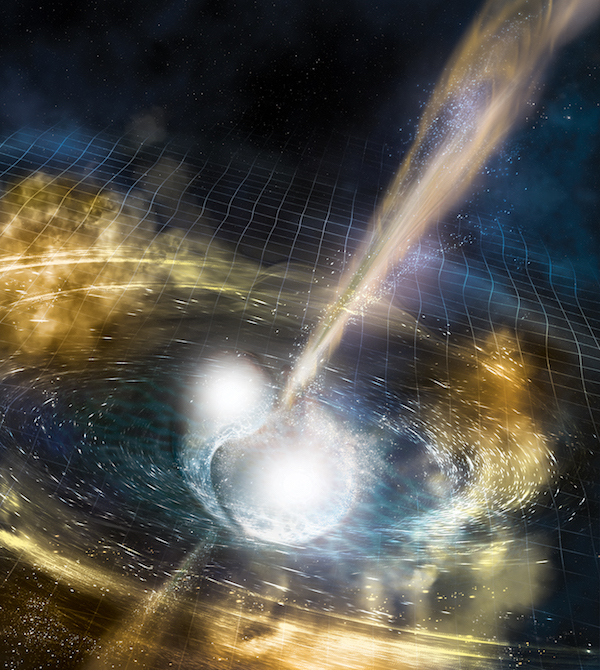Daily Image
30-11-2017Today's Colloquium: Binary neutron stars and gravitational waves: The dawn of multi-messenger astronomy
| Submitter: | Chris Van Den Broeck |
| Description: | Since 2015, Advanced LIGO and Advanced Virgo have been detecting gravitational wave signals from binary black hole mergers. Here I focus on the recent discovery of a binary neutron star coalescence, which was also seen by electromagnetic means. Shortly after having been recorded by the gravitational wave detectors, it was observed as a gamma ray burst (GRB), corroborating the origin of short, hard GRBs as the results of binary neutron star mergers. Thanks to the concurrent observation of gravitational waves and gamma rays, the speed of gravity was establish to be equal to the speed of light to one part in 10^15. Due to the availability of three interferometers (the two LIGOs and Virgo), a reasonably accurate sky location could be provided, which enabled optical astronomers to find an afterglow to the event. This "kilonova", which emitted in X rays, ultraviolet, optical, infrared, and radio, had an evolving spectrum consistent with the creation of heavy elements, confirming the long held suspicion of their origin. The gravitational wave observation allowed for a measurement of tides on the neutron stars, which represents a first step towards constraining the elusive neutron star equation of state. Finally, compact binary mergers offer a novel way of measuring distances in the Universe, bypassing the "cosmic distance ladder". These observations open up a new field at the intersection of physics, astronomy, and cosmology. I will end with plans for future observations with novel gravitational wave observatories, such as LISA and Einstein Telescope. |
| Copyright: | NSF/LIGO/Sonoma State University/A. Simonnet |
| Tweet |  |
